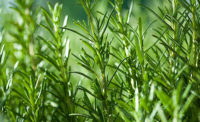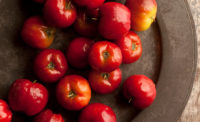Consumers’ interest in natural and organic products along with products that are labeled with simplified ingredient lists are driving the development and increased use of shelf-life extenders.
Still, processors have at least three things to consider for shelf life: color, bacterial control and flavor preservations, i.e., rancidity control, says Joseph Sebranek, Charles F. Curtiss Distinguished Professor in agriculture and life sciences at Iowa State University in Ames, Iowa. Once color is achieved, it is best preserved by appropriate packaging systems whether fresh meat or cured meat are involved. For bacterial control, sodium or potassium lactates and diacetates have been used a great deal for some time and are very effective, but more recently interest has focused on ingredients that are “clean” in terms of the label or that are natural or organic, Sebranek says.
“There have been many recent developments, but it seems to me that various forms of vinegar —buffered, dry, etc. — are coming into considerable use, and they are effective,” he adds.
Rosemary extracts also are now in widespread use as a natural antioxidant. “Several other plant extracts have been shown to have antioxidant activity, but rosemary seems to be the most effective from what I have seen,” Sebranek says.
Jonathan Campbell, meat extension specialist and assistant professor of animal science at Penn State University in University Park, also sees use of vinegars growing as they are clean label and easy to use without losing product quality. “There is a greater demand, either consumer driven or not, for clean-label meat items,” he says. “This limits greatly even simple, safe and functional ingredients for safety and shelf life; for example, sodium nitrite.”
Various fermentation products, which include organic acids, also have proven to be effective shelf-life extenders, Sebranek says. Lauric arginate and octanoic acid are a couple more compounds that can qualify, sometimes as processing aids, to help with bacterial control. Additionally, high hydrostatic pressure is a process that is a good effective alternative for bacteria, he says.
For flavor protection, the phenolic antioxidants are widely used and are very effective in fresh sausage and dried meats, Sebranek adds.
While most shelf-life extending ingredients are easy to use, it is important for processors to work with suppliers for the best way to incorporate specific ingredients or new processes.
“One of the challenges to using new ingredients derived from fruits, vegetables or other natural sources is that the antimicrobial or antioxidant factor in the natural extract or concentrate is often partially absorbed by meat components with a reduction in effectiveness, compared to laboratory studies of the antimicrobial or antioxidant effectiveness,” Sebranek says. “Many of the natural concentrates also carry significant flavor impacts at the concentrations necessary to have an antimicrobial or antioxidant effect. This, of course, limits the practical use of those as ingredients.”
Moving forward Sebranek thinks the “hurdle concept” approach will be used more, which is using combinations of more than one ingredient or process, each of which is insufficient by itself but when in combination “stack up” to achieve the desired effect. “This is a way to overcome the disadvantage, such as flavor, color, etc., of the concentration needed for a single ingredient to have the needed impact on shelf life,” he explains.
Campbell foresees natural, organic and clean-label products will greatly reduce even functional preservatives as simple as salt. “Making some of these items in the future may become increasingly more difficult from both a label approval standpoint and processing,” he says. NP






Report Abusive Comment